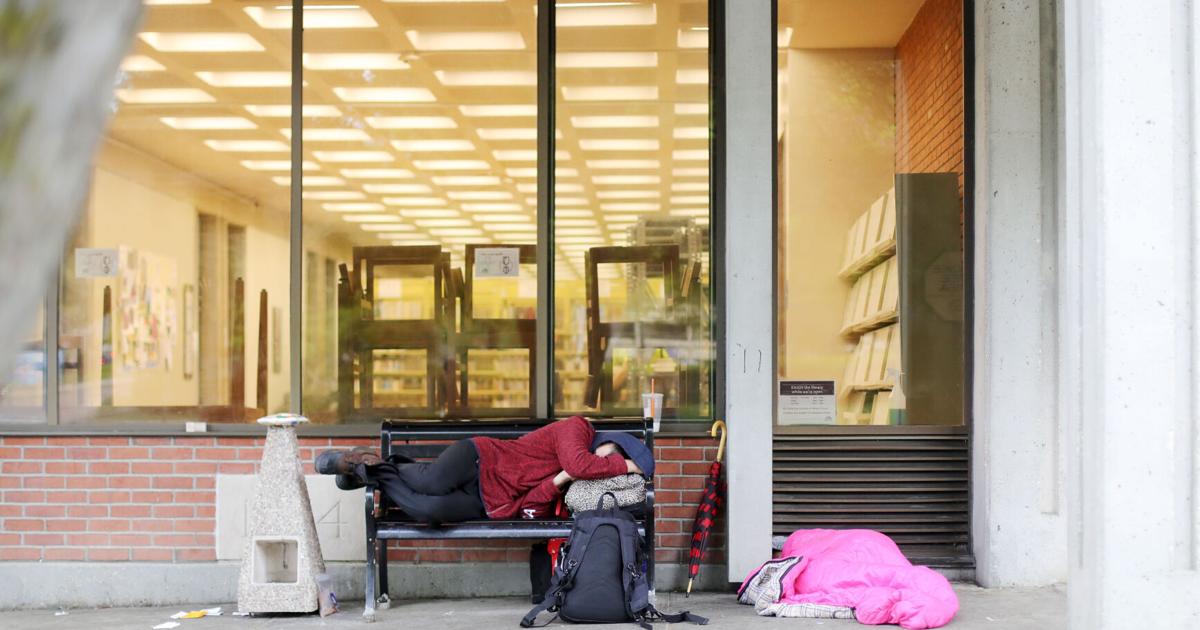Monday night’s meeting of the Pittsfield City Council’s Ordinances and Rules Committee will determine whether Mayor Peter Marchetti’s encampment ban proposal advances. However that procedural step plays out, we credit the mayor for prompting a necessary conversation on the concerning effects of homelessness in Pittsfield.
That’s not to say we think this ordinance is a perfect solution. In fact, there is no singular municipal policy proposal that can truly solve an issue bigger than the borders of any city compounded by overlapping national crises in housing access, mental health and addiction. During a Friday meeting with The Eagle’s editorial board, Mayor Marchetti acknowledged that no single ordinance — no matter how precisely crafted or widely supported — can fully address the human crisis each time someone is forced to survive on the street.
Mayor Marchetti has allowed public criticism to shape amendments to his proposed ordinance — and rightly so. We certainly understood critics who disliked the initial proposal because it carried a criminal penalty and placed restrictions to camping on private property even with the owner’s permission. Both of those elements have been removed from the version of the ordinance being considered by the Ordinance and Rules Committee on Monday.
Still, even with these amendments, some people will remain wary of any enforcement measures aimed at those without a permanent place to go. That concern is understandable — it’s rooted in sincere compassion for our most vulnerable neighbors, whose misfortune and circumstances have led them to a fate no one should have to endure.
Yet that same compassion that compels a critique of this ordinance must also be willing to confront the untenable nature of the status quo. It cannot be ignored that it is bad for the city of Pittsfield and all of its residents, housed or otherwise, if the public sanitation and safety picture on North Street is dire enough that several prominent downtown businesses are considering pulling up their stakes and leaving. That possibility poses nothing short of a socio-economic emergency for a scrappy post-industrial city on the cusp of something greater.
For those who would retort we shouldn’t put business interests before human beings in extremis, consider the ongoing state of emergency for those human beings themselves. Put aside for a moment how bad it is for local business. If someone sleeps under an awning or defecates in a doorway on North Street, we also are failing that sad soul whose daily existence is circumscribed by those desperate circumstances.
Yes, every potential intervention or enforcement has trade-offs. Yet doing nothing and accepting the status quo has its own tradeoffs — for North Street as well as the people who lay their heads on its sidewalks and benches.
Some critics of the mayor’s proposed encampment ban ask where these vulnerable people would be moved along to if this ordinance goes into effect. That’s a fair question. The answer might lie in the model being developed at The First, a housing resource center set to open in September. With amenities like a community kitchen, personal storage and public bathrooms, it could go a long way toward addressing the most immediate needs of the unhoused in a safe space off of the street. While the center wasn’t initially envisioned to be open 24/7, the mayor said he’s talking with The First’s organizers to explore that option backed by municipal funding.
We’re hopeful for what The First can offer, and it should inspire other similar attempts to address immediate needs that could have an outsize impact on quality of life — both for homeless people and downtown. The mayor also indicated he’s exploring the possibility of placing public lockers downtown to give people without the benefit of a closet to store their goods, rather than sprawling their belongings on a sidewalk or in a bus stop. Simple public bathrooms could be a good consideration as well, which would not only be a critical hygiene resource for the homeless but a relief on downtown public spaces and businesses that offer their bathrooms to the general public.
Whether one agrees with the mayor’s approach with this particular ordinance, surely we can all agree that something must be done. To be more precise, we need to find many practical, doable solutions to face the myriad causal factors and challenges this crisis presents. Though the city is not alone in confronting this daunting social issue — and true progress will require municipal, state and federal cooperation — the dysfunction at the federal level and pressure on state resources mean Pittsfield must lead with its own efforts.
Those efforts must be as multifaceted as the issues driving the homelessness crisis — a tall order, given the steep challenges in expanding housing and addressing the intertwined epidemics of mental illness and addiction.
More housing units, affordable and otherwise, are always welcome as a way to relieve the squeeze on current stock; as we have before, we urge legislators to consider relaxing needlessly onerous elements of the state building code to encourage construction. Still, even if we see more units — and Pittsfield will soon — that measure is necessary but not sufficient. What about those on the street who face challenges beyond access to housing? Many require serious rehabilitation and recovery intervention — how can we better connect them to those services?
We don’t pretend to have all the answers. The mayor, to his credit, isn’t pretending to either. But no one who cares about the future of Pittsfield and the welfare of its residents, housed and unhoused, can afford to pretend that the current status quo is sustainable. Whether this particular ordinance advances, we’re glad the mayor has started a serious conversation on the matter — and we hope that conversation continues after Monday night.
